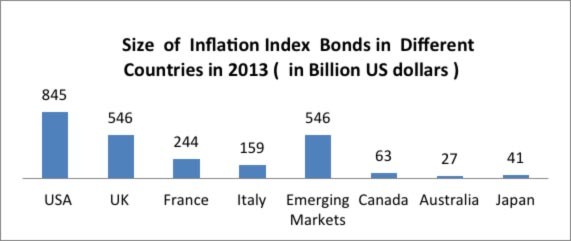Inflation indexed bonds How they work
Post on: 24 Июль, 2015 No Comment

More From Your Money
Insurance Bill: Know the Big Change That Will Impact Your Policy Claim
Missed Rally in Debt Funds? Still Time to Invest, Says ICICI Pru AMC
Pradhan Mantri Suraksha Bima Yojana: 10 Things to Know
EPFO Declares Average Interest of 8.67% in 3 Years to FY15
The Reserve Bank of India (RBI) recently announced inflation indexed bonds, a financial instrument which can act as a hedge against inflation.
These bonds are an enhanced version of capital indexed bonds issued during 1997. Capital indexed bonds provided inflation protection only for the principal while inflation indexed bonds provide inflation protection for interest payments as well. Theoretically, inflation indexed bonds could indicate the willingness of the government to maintain optimal Inflation numbers.
It is important for the government to monitor and maintain optimal inflation levels to keep its cost of debt low. After the initial auction, inflation indexed bonds are traded in the secondary markets. A normal government security bond carries an inflation risk which the inflation indexed bonds are free from. So the difference between the rates of nominal rate of return from a normal government security bond would denote the inflation expectations of the market. Monetary policy makers can take cue from these market expectations to control the inflation rates.
Difference between inflation indexed bonds and other fixed income products
Inflation risk has been a potential problem with fixed income securities, especially with the fixed maturity products. If the inflation rate is higher than the interest rate being received on the fixed income products, it diminishes the purchasing power of the consumer. Inflation indexed bonds are an efficient way to counter the inflation risk.
The main difference between fixed deposits and inflation indexed bonds is the principal adjustment and interest payment. In case of a fixed deposit, a pre-defined static interest rate is mentioned and at the end of the tenure an investor can withdraw the invested amount along with the interest rate accumulated. In case of inflation indexed bonds, the principal is adjusted to wholesale price index (WPI) and a fixed coupon rate or interest rate is paid on the periodically adjusted principal amount.
When compared to debt oriented mutual funds, inflation indexed bonds score higher in terms of capital protection. However, with the dynamics of secondary markets and redemption yet to be rolled out by the RBI, liquidity may remain a primary concern as of now.
Inflation indexed bonds and gold
Gold for long has been used as a hedge against inflation. Till recently, gold has produced some good returns for the Indian investors. However, owing to volatility in the prices, investment in gold will not offer any capital protection. Inflation indexed bonds offer capital protection and can also be used as a hedge against inflation rates.
However, currently inflation indexed bonds are linked to WPI. Instead of WPI, the consumer price index (CPI) stands as a better representative of the purchase power of individuals. As per the latest data, WPI is at 4.89 per cent whereas CPI is at 9.39 per cent. The differential between these two measures of inflation is substantial. From the retail investors perspective, linking the interest with CPI is more beneficial compared to linking it in WPI. Linking the interest rate with CPI will give the necessary advantage for both investors and the regulators. It can act as an alternative investment to gold as a hedge against inflation.
How do inflation indexed bonds work?
During the current phase, the RBI is issuing inflation indexed bonds which are linked with WPI. The invested principal is adjusted as per the prevailing WPI rates and a fixed interest rate is paid on the adjusted principal.
Adjusted principal = [(inflation index at a given point of time) divided by (inflation index at the time of deposit)] multiplied by (principal amount)
Interest being paid = Adjusted principal multiplied by coupon rate
Consider the following example, in which the initial investment (in 2004-05) is Rs 10,000, historic WPI data is from 2004-2005 (taken as 100) and the coupon rate is assumed at 3 per cent.














